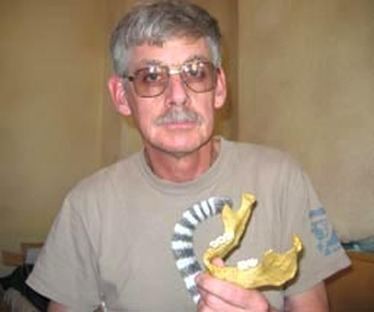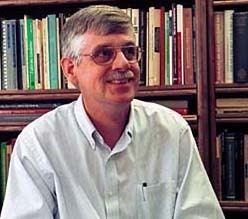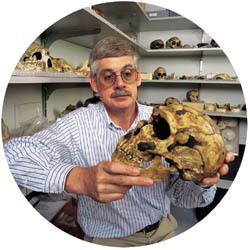Name Erik Trinkaus | Role Professor | |
 | ||
Books The Neandertals, The Shanidar Neandertals, The Early Modern Human fr, The People of Sunghir: Burials - B, The Prehistory and Pale | ||
Erik Trinkaus, PhD, (December 24, 1948) is a paleoanthropologist specialised on Neandertal biology and human evolution. Trinkaus researches the evolution of the species Homo sapiens and recent human diversity, focusing on the paleoanthropology and emergence of late archaic and early modern humans, and the subsequent evolution of anatomically modern humanity. Trinkaus is a member of the National Academy of Sciences, a contributor to publications including Natural History and Scientific American, and is frequently quoted in the popular media. Trinkaus is the Mary Tileston Hemenway Professor of Physical Anthropology at Washington University in St. Louis.
Contents

Education

Trinkaus received his bachelor of arts degree in Art History and Physics from the University of Wisconsin–Madison, and his master's and PhD degrees in anthropology from the University of Pennsylvania, the latter in 1975.
Scientific views
Trinkaus' research has been a major contributor to current debates about human origins. Historically Trinkaus supported theories related to various forms of multiregional evolution, a hypothesis held by a minority of scholars in the field of human evolution. Based on analysis of early human fossils from Europe, Trinkaus suggested that Neanderthals made significant contributions to the gene pool of modern Europeans. In 2010, however, a genetic study showed that only 1-4% of the genome of non-Africans is inherited from Neanderthals, refuting the multiregional hypothesis.
Trinkaus' research emphasizes the biological implications of behavioural shifts that could have been caused by interactions between Neandertals and anatomically modern Pleistocene humans. His research addresses the 'origins of modern humans' debate, the interpretation of the archaeological record, and patterns of recent human anatomical variation, principally through his analysis of human fossil remains. His research involves biomechanical analysis of crania and post-cranial remains, respiratory and thermal adaptations, interpretations of ecogeographical patterning, evaluations of neuroanatomical evolution, life history parameters, and differential levels and patterns of stress, and interrelationships between these anatomically based patterns.
As a finding of a possible representative of a hybridized Neandertal/modern fossil population in Lagar Velho, Portugal has emerged in recent years, Trinkaus has broadened his research to include the complex patterns of human evolutionary change through the Early and especially Middle Pleistocene, especially with regard to the diversity, paleobiology and behaviour of early modern humans.
Research projects
Trinkaus' recent research has primarily focused on three projects. The first involved the early Upper Paleolithic (ca.25,000 B.P.) child's skeleton from the Abrigo do Lagar Velho in Portugal, a specimen which indicates some degree of admixture between the Neandertals and early modern humans in Iberia. The second concerns the largest known sample of early modern human remains, of the Paleolithic Gravettian culture, from the Dolni Vestonice and in the vicinity of Pavlov in southern Moravia, Czech Republic, dated between 25,000 and 27,000 B.P. The third began in 2002 with the discovery in Romania of early modern human remains in the Pestera cu Oase, dated to 35,000 B.P., which represent the earliest modern humans yet discovered in Europe.
